Reverse osmosis (RO) membranes play a crucial role in water purification, but biofouling—caused by bacterial growth on the membrane surface—remains a significant challenge. This article outlines practical strategies to mitigate biofouling, supported by research and real-world examples.
Understanding Biofouling
Biofouling occurs when microorganisms like bacteria and algae adhere to the membrane’s surface. These organisms form biofilms, reducing water flow and increasing operational costs. For instance, studies show that biofouling can lead to a 20-30% drop in water flux and a significant increase in energy consumption.
Strategies to Prevent and Control Biofouling
- Pre-treatment of Feed Water
- Proper pre-treatment reduces the nutrients that microorganisms rely on. Filtration and coagulation can eliminate larger particles.
- Data Example:
Pre-Treatment Method Biofilm Reduction (%) Filtration + UV 85% Chlorination 70%
- Regular Cleaning and Maintenance
- Membrane cleaning should be scheduled to prevent biofilm buildup. For instance, alkaline cleaning solutions effectively remove biofouling and restore membrane performance.
- Antimicrobial Coatings
- Applying coatings that inhibit bacterial adhesion can significantly extend membrane life. Research indicates that membranes with antimicrobial layers show 40% less bacterial attachment compared to untreated ones.
- Optimize Flow Velocity
- Increasing the feedwater velocity reduces the chance of microorganisms settling. A velocity of 2.5-3 m/s is often recommended to minimize fouling risks.
- Chemical Dosing
- Chlorine, biocides, and antiscalants are commonly used to kill microorganisms before they reach the membrane. However, chlorine must be carefully controlled to avoid damaging the membrane.
- Use of Advanced Monitoring Tools
- Real-time sensors can detect early biofouling signs, allowing operators to take corrective action. For example, pressure drop measurements and conductivity changes help assess fouling levels.
Transition to Advanced Solutions
While traditional methods work well, innovative approaches are gaining traction. For instance, pulse-flow reverse osmosis technology intermittently flushes membranes with high-velocity water, effectively preventing biofouling without relying heavily on chemicals.
Conclusion
Addressing biofouling in RO membranes requires a combination of pre-treatment, regular maintenance, and innovative technology. By implementing these strategies, operational costs can be reduced by up to 15-20% annually, ensuring better efficiency and sustainability.

 MBR Membrane
MBR Membrane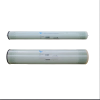 Reverse Osmosis Membrane
Reverse Osmosis Membrane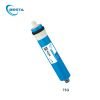 Residential Ro Membrane
Residential Ro Membrane UF Membrane
UF Membrane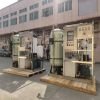 Water Treatment Plant
Water Treatment Plant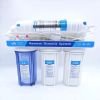 Residential Ro Machine
Residential Ro Machine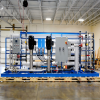 Brackish Ro System
Brackish Ro System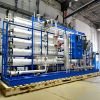 Sea water system/SW RO plant
Sea water system/SW RO plant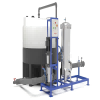 Membrane Cleaning System(CIP)
Membrane Cleaning System(CIP)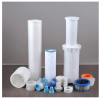 Consumables Accessories
Consumables Accessories
